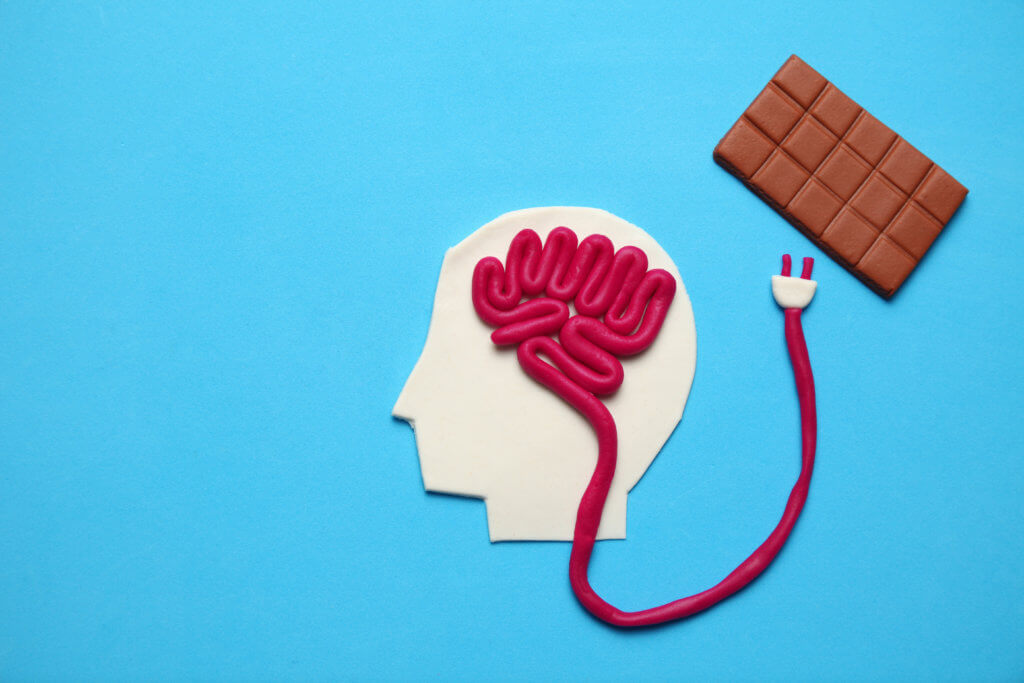We’ve all experienced that queasy feeling that kills your appetite — whether from a stomach bug, or a migraine. But what if we could harness the power of that nausea-induced appetite suppression to help control overeating and obesity? Researchers at the Max Planck Institute for Biological Intelligence in Germany may have found a way, thanks to a special group of brain cells they’ve dubbed the “nausea neurons.”
The study, published in the journal Cell Reports, focused on a region deep within the brain called the central amygdala. This almond-shaped structure is known for its roles in emotions like fear and anxiety. But as it turns out, it’s also a key player in regulating feeding behavior.
Using cutting-edge genetic techniques in mice, the team identified a distinct population of neurons within the central amygdala that express a protein called delta-like non-canonical Notch ligand 1, or Dlk1 for short. These Dlk1 neurons proved quite interesting — they fired up in response to nausea-inducing substances like lithium chloride and a stress hormone called GDF15, as well as bitter tastes like quinine. In contrast, they didn’t respond much to signals of fullness or inflammation that also tend to decrease appetite.
What happens when these nausea neurons are switched on? Researchers found that artificially activating the Dlk1 neurons with precise laser light caused the mice to immediately stop eating or drinking. It even interrupted their socializing, although it didn’t seem to alter their general anxiety levels or curiosity towards novel objects. In essence, triggering these cells put the brakes on the mice’s drive to consume.
On the flip side, when the team used a chemical genetic approach to silence the Dlk1 neurons, it negated the appetite-suppressing effects of lithium chloride. This suggests that the activity of these particular neurons is necessary for nausea to put a damper on eating.
To show how these tiny cells are able to wield such influence over feeding behavior, circuit tracing experiments revealed that the nausea neurons send out projections to several other brain regions, including one called the parabrachial nucleus, or PBN. The PBN is known to be a hub for processing all kinds of aversive or unpleasant sensations.
Zooming in on this connection, researchers found that the Dlk1 neurons appear to directly inhibit a specific subset of PBN cells marked by a protein called calretinin. This inhibition, they hypothesize, might then indirectly ramp up the activity of another group of PBN neurons that respond to aversive signals and ultimately suppress appetite.
But the nausea neurons don’t act alone — their activity is kept in check by inputs from other cell types in the central amygdala that typically promote appetite, ensuring a fine balance. The Dlk1 neurons also receive long-range inputs from areas involved in sensory processing, memory, and emotion, hinting at a complex web of factors that influence whether we feel like eating or not.
While this study was conducted in mice, the central amygdala is evolutionarily quite similar across mammals, suggesting these findings could be relevant for humans too. More research is needed before any kind of anti-obesity ‘nausea neuron’ therapy could even be imagined. Scientists would need to find safe, precise ways to target these cells without causing unintended side effects.
Still, uncovering this intricate brain circuit that links nausea and appetite suppression is a big piece of the puzzle. It helps explain why we often don’t feel like eating when we’re nauseated, and could potentially lead to new strategies for managing overeating and weight gain in the future.












